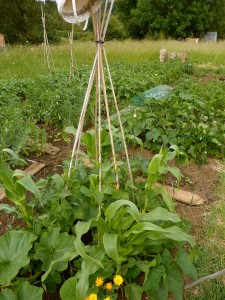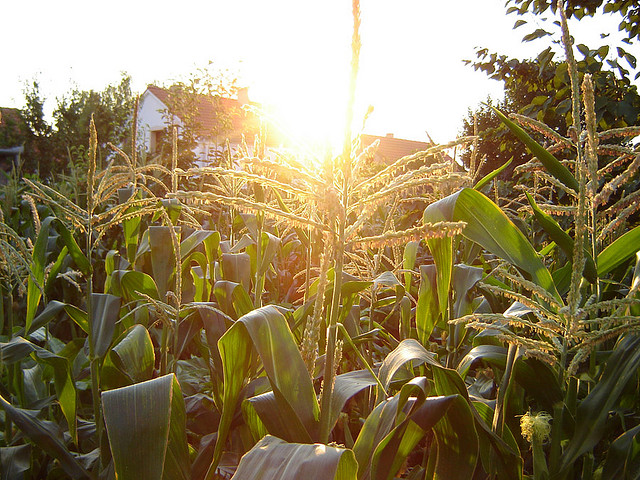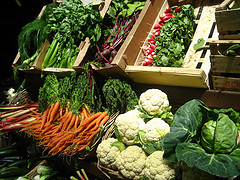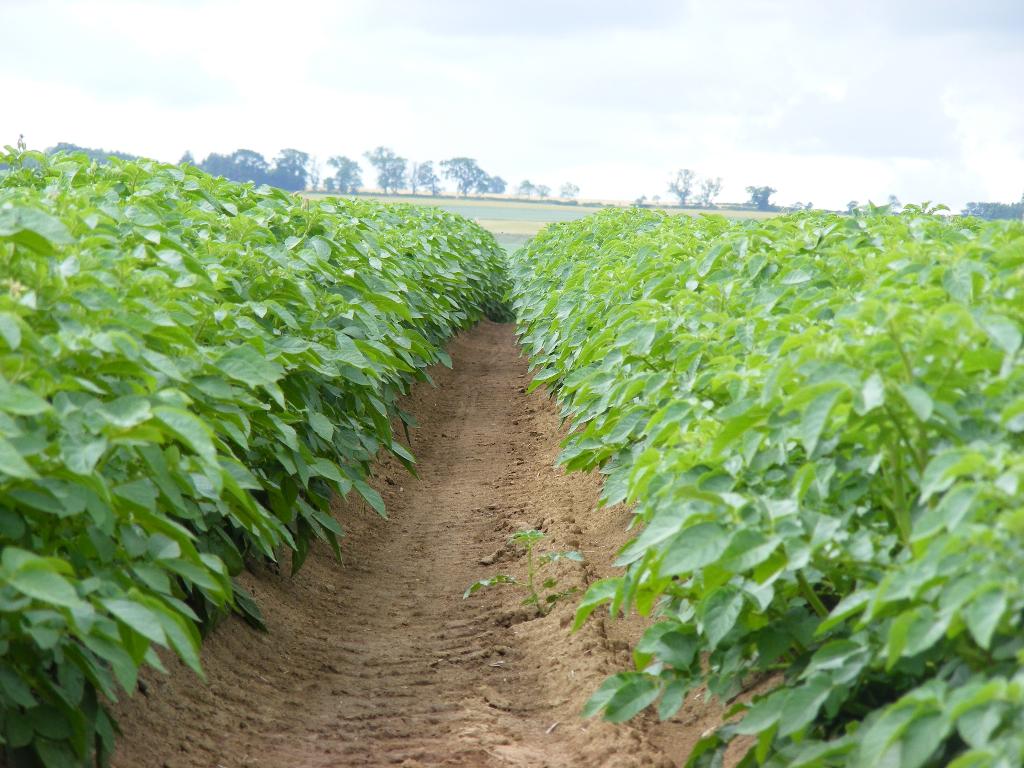 The three sisters’ form of gardening is based on two things: a Native American legend and a traditional Native American form of farming. The three sisters in the name come from three distinct vegetables that when planted in tandem thrive. The legend is told in several different ways, and has roots in Iroquois traditions.
The three sisters’ form of gardening is based on two things: a Native American legend and a traditional Native American form of farming. The three sisters in the name come from three distinct vegetables that when planted in tandem thrive. The legend is told in several different ways, and has roots in Iroquois traditions.
The story involves three sisters: an older one with yellow hair who stands straight and tall over her younger siblings, wearing a green shawl; a middle sister who wears a bright yellow dress and likes to run when the sun shines; and a younger sister, wearing green, who can do nothing at first but crawl around on the ground. At the end of the tale, the younger sister is tasked with keeping the cooking pot full, while the middle sister waits for her yellow dress to dry off, and the older sister grinds meal to go with the rest of their dinner.
When transferred into gardening terms, the older sister is corn, the middle sister is squash, and the younger sister is beans. When combined in a garden and planted in traditional gardening mounds, the plants will make it hard for pests and hungry “critters” to get to them. Their symbiotic relationship goes further than just pest-prevention, however:
Corn -The corn stalks act as poles as the bean plants gradually grow and twist around them. Corn also is full of carbohydrates, and is an essential crop if self-sufficiency is your goal.
Beans – The bean plants stabilize the corn stalks as they grow around them, giving them support as they, in turn, are supported themselves. On top of this, the nitrogen in the roots of the bean plant is a natural fertilizer and it will keep the soil in good condition. Nutritionally, beans contain plenty of protein.
Squash – The squash plants grow around the bases of the corns and beans, protecting the soil from harsh sunlight and keeping it moist. The beans and the corn reciprocate by providing even more shade for the squash, since they are taller. The spines in the squash plants keep hungry “critters” at bay and away from the squash’s larger “sisters.” On top of this, squash contains a lot of different vitamins and minerals, making it the third, vital part of any diet.
In order to plant a successful three sisters’ garden, you need to follow a specific set of directions. Otherwise, the plants will not work in harmony.
1) Start with several mounds of soil. They should be around 18 inches high and 24 inches across.
2) Plant the corn first. Place 4 or 5 kernels in the center of each mound.
3) When the corn is 5 to 6 inches high, plant the pole beans. They should be placed in a circle 6 inches away from the corn and around the new corn stalks; you need to plant 7 or 8 of the bean seeds.
4) One week after planting the beans, plant the squash. (You can also plant pumpkin seeds; the choice is yours.) The 7 or 8 squash seeds go in a ring around the beans, about 12 inches away from them, and at the very edge of the mound.
5) As the plants grow, remove any of them that seem weaker, leaving only the stronger ones to thrive. You may have to manually twist some of the bean plants around the corn stalks, to ensure that they are growing where they are supposed to.
Sick of Pests Ruining Your Garden? Natural Pest Control is NOT a Dream!
Do you want to be rid of pests in your garden?
If you’ve ever wanted to find out how to get rid of pests organically, then I highly recommend that you check out Companion Planting and Natural Pest Control for Veggies.
The Companion Planting and Natural Pest Control for Veggies can help you rid your garden of pests organically. You’ll learn 7 proven strategies for discouraging pests and 11 must have plants which attract good predatory insects. Get this comprehensive and gorgeous book today.
Click here to see if it is right for you.
Pic by net_efekt.




No comments yet.